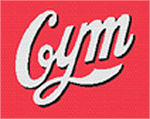As a new school year begins, the usual pedagogical controversies persist: Whole language vs. phonetics? Multiculturalism or the canon? But at least there’s one thing most everyone appears to agree on—we all want our kids to grow up to be good consumers. Here’s a brief show-and-tell.
 |
| Logo illustrations by Alex Louie |
Current Events
Slick book covers featuring Calvin Klein and Nike ads transform dull textbooks into dynamic current-events discussion starters. And for areas where grocery stores no longer offer paper sacks, the sturdy ad-sponsored book covers, provided to schools free of charge, help protect the value of costly textbook investments.
 Composition
Composition
Instead of wasting time on pointless “What I did on my vacation” essays, aspiring copywriters now have plenty of opportunities to start building portfolios. One example: In 1996, Snapple delivered a challenge to young wordsmiths to write a commercial for the beverage company. While most schools have yet to implement a formal copywriting curriculum, the two minutes of commercials that Channel One broadcasts each day in 40 percent of the nation’s high schools and middle schools provide excellent “real world” examples for tomorrow’s Clio winners.
Recess
To the uninformed, it may sound like standard radio programming, complete with top music hits and 10 minutes of ads per hour. But in the context of schools, it’s actually an “educational tool,” according to Star Broadcasting president Pat DiPlacido. He says his company’s music-oriented radio broadcasts, which play in school hallways, courtyards, and cafeterias, can increase student productivity and decrease behavior problems. In addition to these benefits, schools get 40 percent of the ad revenues, which DiPlacido predicts will translate into $5,000-$10,000 annually for each participating school.
![]() The New Math
The New Math
Long underestimated as merely the world’s most ubiquitous sweet, chocolate is actually a multidisciplinary educational tool: The Chocolate Dream Machine, a Hershey’s-sponsored curriculum, offers lessons in math, science, geography, and nutrition.
Lunch
To help school food-service directors promote often-maligned cafeteria fare to students, School Marketing Partners offers attractive, full-color, ad-sponsored menus to schools free of charge. According to Frank Kohler, the company’s co-founder, studies have shown that eating a nutritious meal leads to higher test scores, longer attention spans, and decreased tardiness. And, as if that’s not enough to sway underachieving, potato-chip-eating brown-baggers to the hot lunch line, School Marketing Partners, in cooperation with its various advertisers, often rewards cafeteria patrons with prizes such as Hot Wheels cars and Hanson posters.
Science
Students learn that being green doesn’t have to mean being unclean—Procter & Gamble’s Planet Patrol syllabus touts Pert Plus’ shampoo-and-conditioner-in-one approach to personal hygiene as an example of creating less waste.
 Gym
Gym
High schools all across the country are inking multimillion-dollar deals with Coke and Pepsi to fund new sports stadiums and other educational staples. The Colorado Springs school district has landed one of the larger deals so far: Coke will pay it $8-$11 million for exclusive “pouring rights” over the next 10 years, as long as the district’s 33,000 students purchase at least 70,000 cases of Coke products annually. The personal consumption responsibility of each student under the terms of that deal? An easily attainable 50 cans per year.
Extracurricular
To help prevent the various excessive behaviors associated with high school proms, StudentAware Communications produces a series of “safe and sober” prom posters. Corporations foot the bill for these commonsense reminders that budget-strapped schools are not able to create on their own. As payback for their good deed, the corporations are permitted to give away product samples at the prom. The result: One of the most anticipated—and potentially dangerous—rituals of adolescent passage is made as safe as a trip to the mall.












